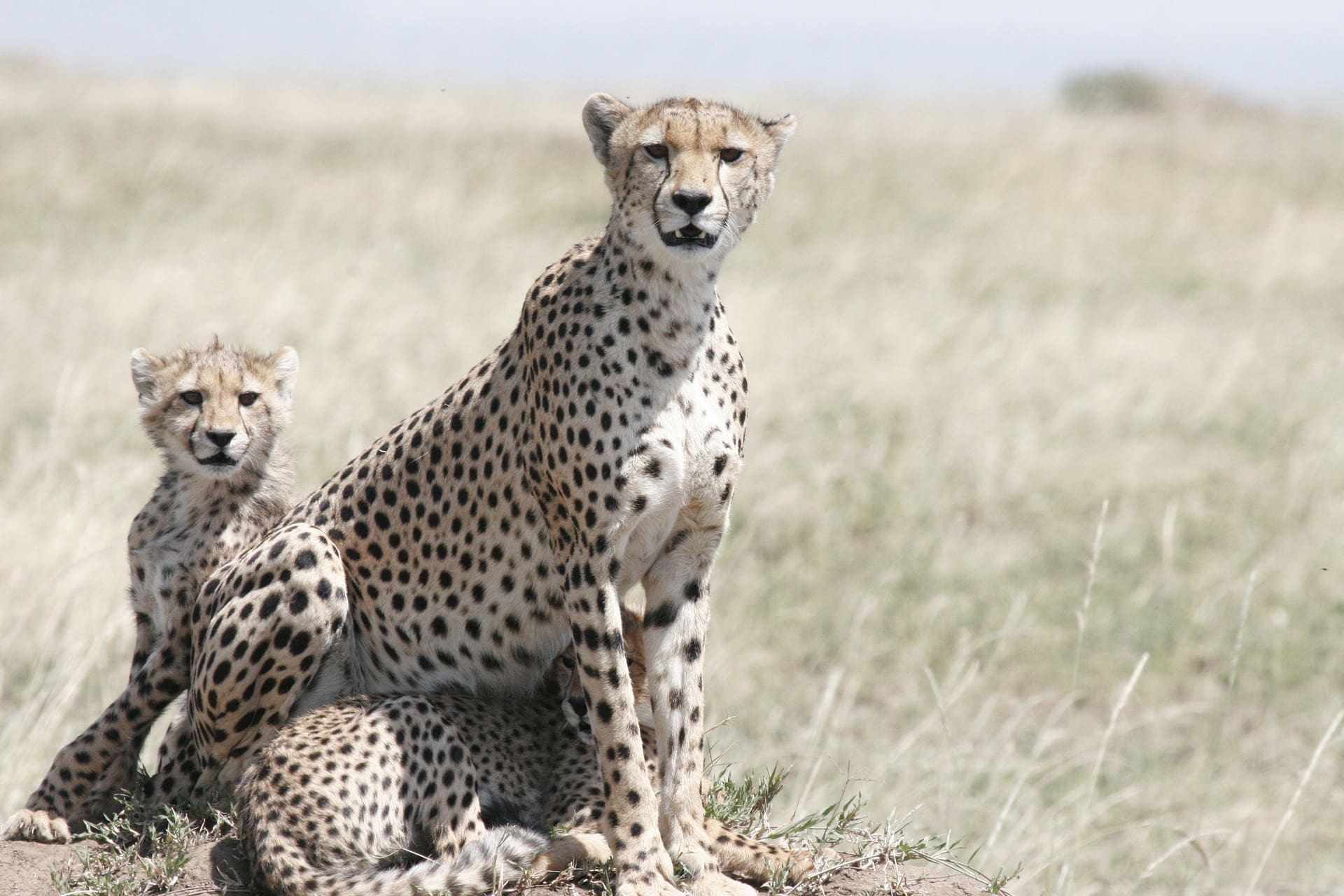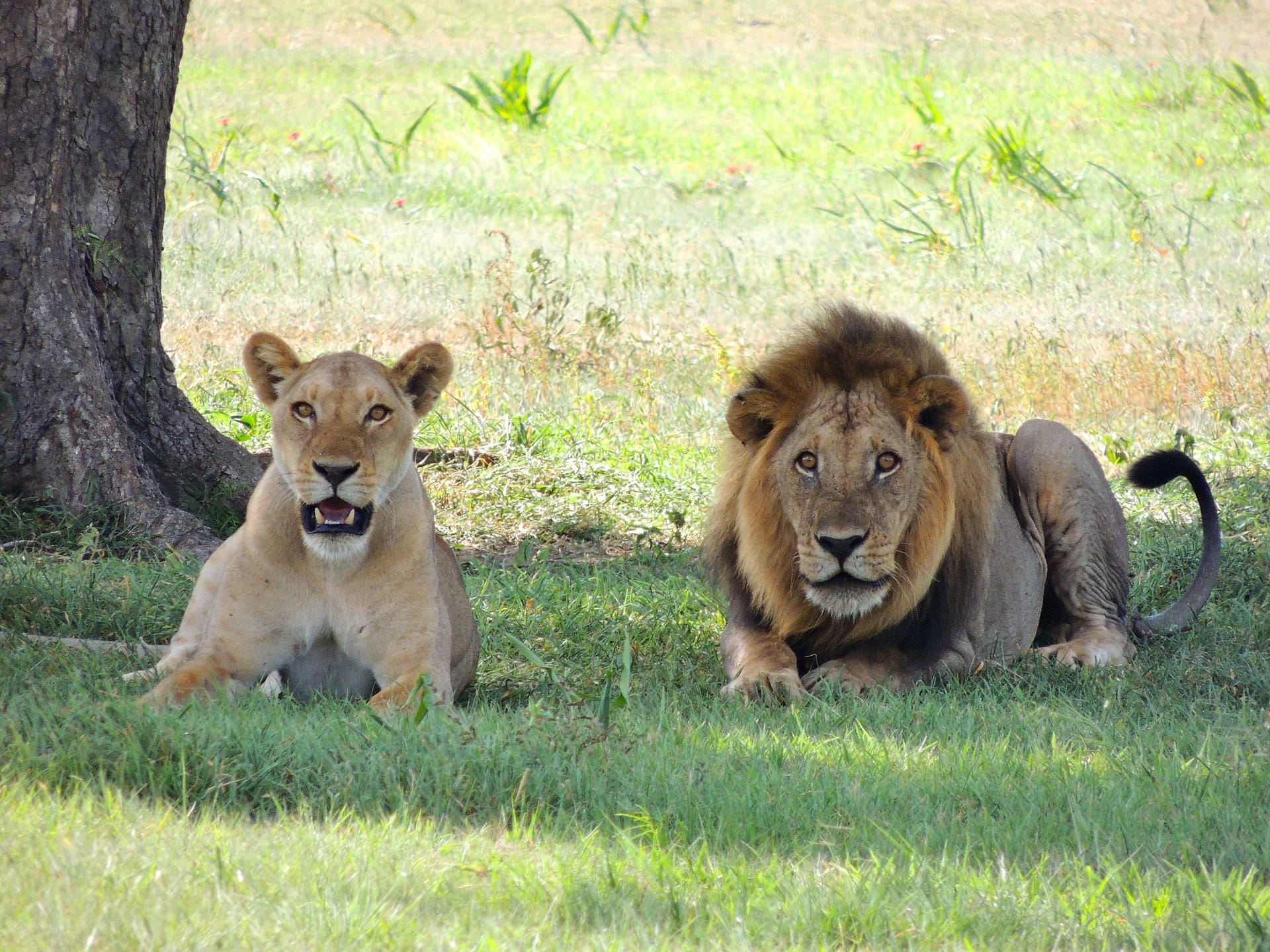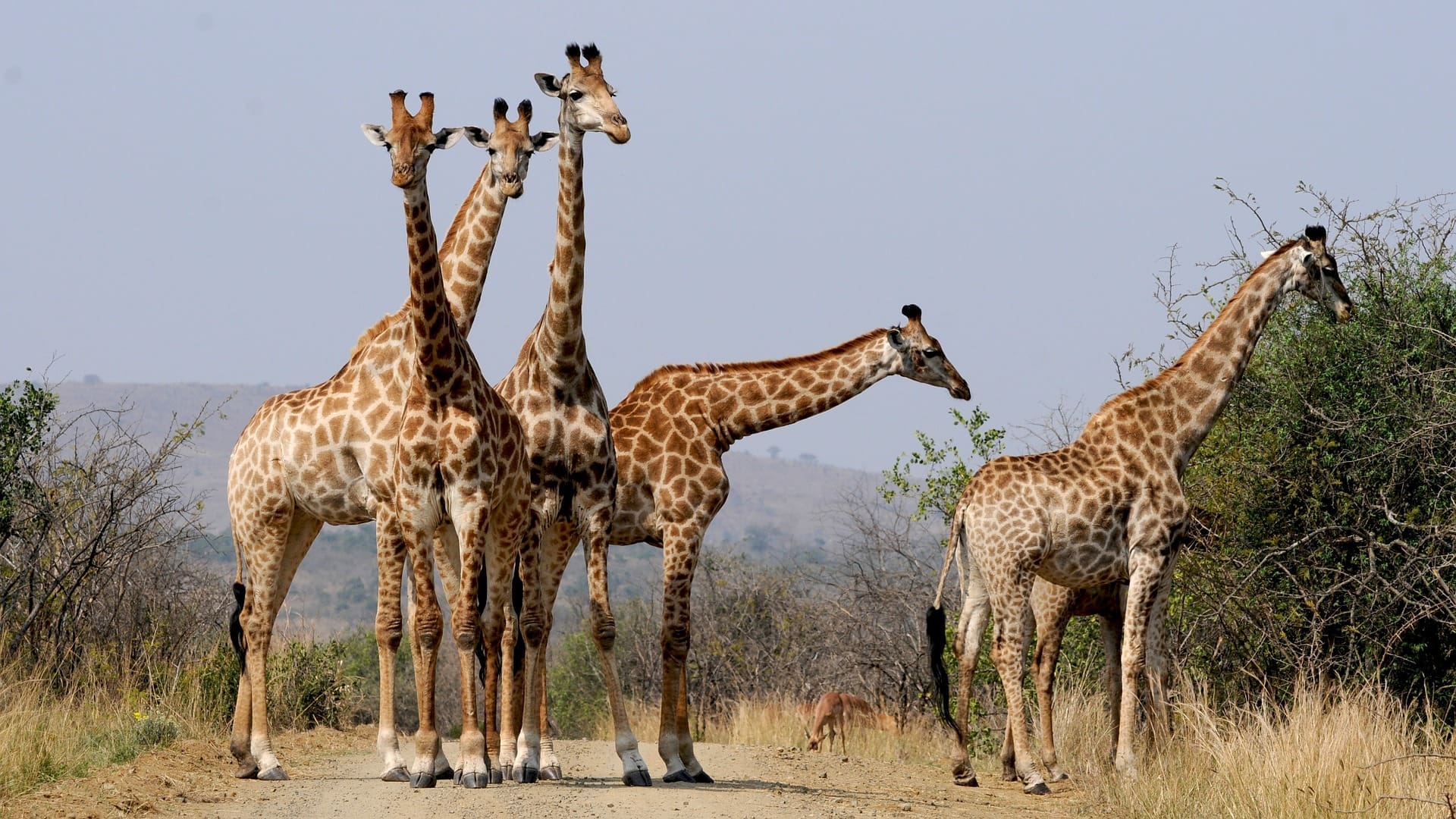As one of the largest and most beautiful countries in Africa, Tanzania is home to a plethora incredible attractions, with the most popular being its national parks. From the extremely remote to those more abuzz with tourists, there is a safari destination for everyone.
Tanzania is home to some of the most famous safari parks in the world like Serengeti National Park and the Ngorongoro Crater, but there is far more on offer in the country than just these titanic destinations.
Each of the national parks on this list offers its own set of unique attractions and reasons why you should visit them on your trip to Tanzania!
How many national parks are in Tanzania?
East Africa is a true heavyweight when it comes to wildlife and national parks. Tanzania in particular, is home to many exceptional national parks and protected areas. So many that it can actually be quite overwhelming trying to narrow down the best areas to visit.
To help guide you plan your African travel itinerary, we’ve shortlisted are the 12 most beautiful national parks in Tanzania.
The 12 Best National Parks of Tanzania
1. Serengeti National Park
With its name originating from the Maasai word ‘sringet’ meaning ‘a place where the land goes on forever’, the Serengeti National Park is one of the oldest and most famous national park in Africa.
Hundreds of thousands of tourists visit the national park every year, to witness Africa at its most wild as the Serengeti plays a part in The Great Migration, which is arguably the greatest wildlife spectacle on earth.
Often the location chosen for wildlife films and documentaries, the Serengeti supports the largest concentration of predators in Africa. Sightings of lion, hyena and cheetah are extremely common. Thanks to the vast, open topography and the presence of expansive grasslands and plains, the Serengeti is one of the best places to observe Cheetahs hunting in the wild. The park is also home to over 500 bird species, including Ostrich.
The best time to visit the Serengeti is between June and July as this is when the migration begins to move north and the chances of witnessing this gruesome yet spectacular fight for survival are the highest.
2. Ngorongoro Crater National Park
The culmination of expansive plains, savannah grasslands, woodlands and the world’s largest caldera, Ngorongoro National Park has been of the premier wildlife destinations in Tanzania since it was established in 1959. The Ngorongoro Crater came into being after a historic volcanic explosion.
The property, which forms part of the Serengeti, has immense global importance for biodiversity conservation thanks to the presence of a vast number of threatened species, the density of wildlife in the area, and the role it plays in the annual great migration on its northern plains. Archaeological research has also yielded evidence of human evolution, including early hominid footprints dating back 3.6 million years.
Ngorongoro national park offers epic photographic opportunities, with large herds gathering in their thousands and the predators who follow them frequenting the lands and showing off against the dramatic backdrops of the volcanic craters.
The park is a multiple land use area, with wildlife coexisting alongside native tribes of Maasai people who practice subsistence farming and livestock grazing within the crater.
3. Tarangire National Park
Tarangire National Park is the sixth largest national park in Tanzania and one of the best places on the continent to see migrating elephants and tree-climbing lions.
The dry season sees herds of up to 10,000 elephants migrating through the park, in search of water along the Tarangire river, which is the regions only water source during this time of year.
Far less crowded than most other national parks in Tanzania, perhaps because it is not situated along the traditional safari route, Tarangire offers exceptional wildlife viewing all year round. Large herds of buffalo and giraffe are common and a variety of rare species such as: the fringe-eared oryx, greater kudu and Ashy Starling – all of which can be seen nowhere else in Tanzania.
The elephants aren’t the only giants to look out for in Tarangire, the park is home to a high concentration of colossal baobab trees and large termite mounds, which together create a fairytale like landscape.
4. Lake Manyara National Park
Often referred to as a mini Serengeti, Lake Manyara National Park is very small as far as wilderness areas go, and most of the area is covered by the lake itself (approximately one third). However small it may be, the park still hosts 11 different ecosystems and an abundance of wildlife.
Predator sightings are scarce in Lake Manyara, but it is one of the best national parks in Tanzania to see the tree-climbing lions that are so synonymous with the country. Spending the warm afternoons, lazing away in the shade, its not uncommon to see and entire pride of lions resting on the branches of the same tree.
The groundwater forest surroundings of the lake offers a varied landscape from the harsh African savannah, and wherever there is water, you’ll find a high density of large mammals, and Lake Manyara is known for intimate sightings with large herds of elephants, buffalo, wildebeest, zebra and giraffe.
The lake and surrounding marshes are a haven for hippo, large flocks of flamingos and around 300 species of migratory bird.
5. Selous Game Reserve
Relatively unknown and not technically a national park, Selous Game Reserve is the largest national reserve in Africa and also represents the largest uninhabited area on the continent. It goes without saying that wherever there is a lot of space and hardly any people, there will be a high density of animals and that is most definitely the case at Selous.
The reserve is home to all of the Big Five and an array of wildlife in extraordinary numbers. Its estimated that the region is home to around 120,000 buffalo, 4,000 lions and thousands of migrating elephants.
Here you’ll also see cheetah, leopard, giraffe, zebra, wildebeest, hyena and maybe even black rhino or African wild dog, with around 50% of their remaining population found in Selous Game Reserve.
Located in southern Tanzania, far from the crowds of the country’s northern safari circuit, visitors will find a much quieter and more authentic African bush experience at Selous.
The Rufiji River is the heartbeat of the reserve, and with a massive network of tributaries and waterways, acts as the main water source for hundreds of thousands of animals.
Boat safaris along the river are a great way to spot some of the 40,000 resident hippos and the huge population of crocodiles.
6. Ruaha National Park
The third largest national park in Tanzania might not come with a world-famous reputation, but it certainly offers some of the wildest terrain for visitors to explore.
Ruaha National Park famous for its breathtaking beauty, ancient baobab trees, picturesque river and incredibly exciting game viewing experiences on offer.
Ruaha is home to incredible biodiversity and is said to host 10% of the worlds total lion population and more elephants than any other national park in Tanzania. Lions are often spotted in large prides of up to 25 individuals, and seeing a pride this size attempting to take down a buffalo is a once in a lifetime sighting.
The park’s landscape is made formed by giant mountains that lead into vast grasslands, rocky outcrops, and a network of rivers. The largest of which, the Great Ruaha River, afterwhich the reserve is named.
As with Selous Game Reserve, Ruaha is still relatively undeveloped and untouched by tourism and offers African experiences of another era.
7. Gombe Stream National Park
Although it cannot compare in size, to its counterparts across Tanzania, Gombe Stream National Park boasts one of the most unique offerings of any national parks in Tanzania. The park was made world-famous by Jane Goodall, who took up residence here during her pioneering research on chimpanzees in the 1960’s.
Chimpanzee tracking expeditions are the primary attraction at Gombe, but visitors can also expect to see a wide variety of other primates such as: olive baboons, red colobus, red-tailed monkeys, blue monkeys and vervet monkeys. The park is also home to over 200 bird species, bush pigs, hippo and the occasional leopard.
The landscape features sloping and forested mountains that cascade down to Lake Tanganyika, vast grasslands and warm tropical rainforests. Gombe boasts a network of trails which penetrate deep into the forest and offer some of the best views of it’s incredible jungle terrain.
The park is only accessible by boat over Lake Tanganyika, in which visitors can snorkel and share the water with some of the 2000 species of colourful fish that call the lake home.
8. Katavi National Park
Situated in Western Tanzania, Katavi National Park offers its best sightings during the dry season.
During this time, the Katuma and Kapapa rivers are the only water source for vast distances and so thousands of animals congregate here in search of the nourishment they need to survive the harshest period of the year.
Around these water sources you’ll be treated to sightings of hundreds of crocodiles sun bathing in the mud, massive pods of hippos crammed into the dwindling pools of water, and herds of thousands of zebra, buffalo and plains game coming down to the water to drink.
Katavi also remains one of the best places in Tanzania to see battles between lions and buffalos, and due to its remoteness, there is very little traffic around these highlight sightings.
Reaching the park requires a lot of effort and this alone puts most travelers off of visiting Katavi. However, its a journey you will not regret. Katavi presents untouched wilderness and it is common to run across more predators than humans while you’re here.
9. Mahale Mountains National Park
The lesser-known neighbour of Gombe, Mahale Mountains National Park is a more luxury alternative, and another incredible location to get up close with humans closest relatives.
Mahale Mountains is a vast chimpanzee sanctuary, home to over 2000 individuals. Aside from the chimps, the park is also home to a few unusual characteristics which make it extra special.
The park is surrounded by the picturesque Mahale Mountain range, nestled onto the banks of Lake Tanganyika – which is the longest, second deepest and least polluted freshwater lake in the world.
The lake is surrounded by glittery sand beaches, those of which Africa is so famous for. There is no better spot to watch the sunset shallow below the horizon.
10. Arusha National Park
Although small in comparison to the heavy hitting national parks in Tanzania, Arusha still packs a punch.
Arusha National Park lies within close proximity to the safari hub Arusha and can easily be visited within a single day round trip. The park is home to Mount Meru, the second highest peak in Africa, and a vast range of biodiversity with vegetation ranging from grasslands, rainforests and alpine areas.
Although small, Arusha is teeming with wildlife. The reserve supports the largest concentration of giraffes on the continent and large populations of waterbuck, buffalo, elephant, hippo, flamingos and monkeys.
The size of the park means no more than a few hours are needed to see the entirety of it, and walking or canoe safaris are popular activities. Most travelers stopover en route to larger parks.
11. Mikumi National Park
Often referred to as the second Serengeti, Mikumi National Park hosts incredible diversity and a large concentration of wildlife.
The Mkata Floodplain is the star attraction of the national park as it attracts large herds of big game animals like zebra, wildebeest, buffalo and impala.
Mikumi is well-known for its legendary giraffe, lion and elephant sightings, however the landscape is also an attraction on its own. Scattered with baobab trees, black hardwood trees, grassy plains and tucked in between three mountains ranges – The Uluguru, Rubeho and Lumango – the park offers some of the most picturesque photo opportunities of any in Tanzania.
The reserve is home to several primate research studies most notably the yellow baboon field study.
12. Kilimanjaro National Park
Home to the highest mountain peak in Africa, Kilimanjaro National Park was established in 1973 and sees thousands of visitors every year.
Once exclusive to the experienced hiker, the trek up the 5895 metre Mount Kilimanjaro has been made more accessible for the average person thanks to the development of more gentle paths and day trips. However these experiences don’t come cheap.
The mountain provides an incredible scene multiple glaciers and snow capped peaks.
Primates such as blue monkeys and western black-and-white colobuses can often be spotted (or heard) in the forest, while leopards, elephants, and cape buffaloes can be found in the woodlands below.












